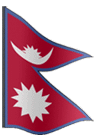Kala-azar Elimination Programme
Kala-azar is a vector-borne disease caused by parasite Leishmania donovani, transmitted by the sand fly, Phlebotomusargentipes. The disease is characterized by fever for more than two weeks with spleenomegaly, anaemia, and progressive weight loss and sometimes darkening of the skin. In the endemic areas, children and young adults are its principal victims. The disease is fatal if it is not treated timely. Kala-azar and HIV/TB co-infections have emerged as a health problem in recent years.
The government of Nepal has committed to the regional strategy to eliminate Kala-azar, and is a signatory (along with India and Bangladesh) of the memorandum of understanding that was formalized during the World Health Assembly 2005 on Kala-azar elimination. The target of this memorandum is achieving Kala-azar disease elimination by 2015. In 2005, Epidemiology and Disease Control Division (EDCD) of Department of Health Services also formulated a National Plan for the Elimination of Kala-azar, which is divided into three phases:
- Preparatory Phase: 2005-2008
- Attack Phase: 2008-2015
- Consolidation Phase: 2015 onwards.
The target is to reduce the annual incidence of Kala-azar to less than 1 per 10,000 populations at the district level by 2015.
Over the last decade, there have been some significant advances both in the diagnosis and treatment of Kala-azar. The rK39 dipstick test kit, a rapid and easily applicable serological test has been widely used in the Indian subcontinent including Nepal. The national programme to eliminate KA in Nepal has made this test kit available up to PHC level of programme districts.
Programme Implemented by
Disease Control Section
Epidemiology and Disease Control Division
Department of Health Services (DoHS)
Teku, Kathmandu
T : 01-4255796
F : 01-4262268

